Archaeology

Jun 30th, 2025 - Trading knowledge—not wares: Archaeological study sheds light on women's overlooked role in Papua New Guinea sea trade by Robert Skelly, Barbara Etschmann, Chris Urwin, Joël Brugger, Teppsy Beni, Australia's closest neighbor, Papua New Guinea, is a place of remarkable cultural diversity. Home to cultures speaking more than 800 languages, this region has been interconnected by seafaring trade networks for thousands of years. Because seafaring was most often undertaken by men, it has ... [Read More]
Source: phys.org

Jun 30th, 2025 - Archaeologists in Israel have discovered four "unique" bronze artifacts, adorned with elaborate 3D lion heads, that are roughly 1,900 years old. Researchers uncovered the rare bronze discs during a salvage excavation conducted by the Israel Antiquities Authority (IAA) at a site named Khirbat Ibreika — located in the center of the country — prior to the laying of a railroad, according to a study published in the latest issue of the official IAA journal, 'Atiqot . The excavation, ... [Read More]
Source: livescience.com
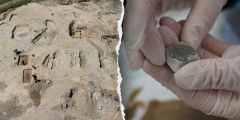
Jun 30th, 2025 - You can now listen to Fox News articles! Archaeologists recently found an artifact-filled Viking-era burial site in Denmark — revealing treasures that once belonged to an elite family. The discovery was announced by Moesgaard Museum (MOMU), a r egional Danish museum , in a June statement. The graveyard was found in the village of Lisbjerg, located north of the major Danish city of Aarhus. Archaeologists found 30 graves containing a vast number of burial gifts, including beads and ... [Read More]
Source: foxnews.com

Jun 28th, 2025 - Utility workers recently came across a millennia-old mummy that predates the Inca Empire. The groundsmen were excavating trenches in the Peruvian capital of Lima earlier in June when they came across the remains. The well-preserved female mummy dates back 1,000 years, experts said — and was found just 20 inches below the ground. Archaeologists Uncover Never-before-seen Tombs Of Ancient Egyptian Officials The Inca Empire lasted from around 1400 to 1533 A.D. — so the individual died ... [Read More]
Source: aol.com
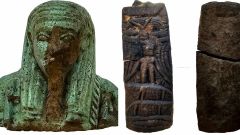
Jun 26th, 2025 - Archaeologists have discovered the remains of multistory houses and a ceremonial building linked to the cobra-headed goddess Wadjet in the ancient Egyptian city of Imet. Dense architectural remains indicate that Imet was a bustling urban center during Egypt's Late Period (circa 664 to 332 B.C.), or the last period of Egyptian rule before Alexander the Great and his general Ptolemy I Soter took over, according to a statement describing recent excavations in what is now Tell Nabasha (also spelled ... [Read More]
Source: livescience.com

Jun 25th, 2025 - A closer look at the burial of a man born of incest 5,000 years ago reveals he was unlikely to have been a god-king. The ancient DNA of a man buried in a monumental Stone Age tomb in Ireland revealed he was born of incest 5,000 years ago. But this fact doesn't mean he was a "god-king" as previously claimed, according to a new study. "Nothing in the archaeological record from Neolithic Ireland indicates that 'kings' — or any sort of royal hierarchy — existed at the time," study lead ... [Read More]
Source: livescience.com
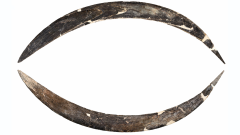
Jun 25th, 2025 - An unusual mammoth tusk boomerang discovered in a cave in Poland is 40,000 years old — making it Europe's first example of this complex tool and possibly the oldest boomerang in the world, a new study finds. "The ivory object has all the features of boomerangs used by Aborigines in Queensland today," study co-author Paweł Valde-Nowak , an archaeologist at Jagiellonian University in Krakow, Poland, told Live Science in an email. "Its arched shape, flat-convex cross-section and ... [Read More]
Source: livescience.com

Jun 23rd, 2025 - For the past 100 years, Egyptologists thought that when the powerful female pharaoh Hatshepsut died, her nephew and successor went on a vendetta against her, purposefully smashing all her statues to erase her from public memory. Now, a new study finds that's not quite the case. Although many statues of Hatshepsut were intentionally broken, the reason behind their destruction has nothing to do with her gender or even blotting out her existence, an Egyptologist says. Rather, Hatshepsut's statues ... [Read More]
Source: livescience.com
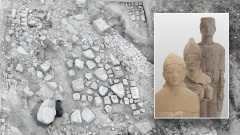
Jun 14th, 2025 - Archaeologists recently made numerous "spectacular" discoveries at a long-forgotten temple to an Ancient Greek god, according to local officials. The Department of Antiquities in Cyprus shared a Facebook post about the latest excavation on April 28. The site, the Sanctuary of Apollo at Frangissa, was first discovered in the 19th century before it was subsequently lost, the group said. Apollo, the god of archery and the son of Zeus, was venerated both in Ancient Greece and Ancient Rome . He was ... [Read More]
Source: aol.com

May 26th, 2025 - CAIRO (AP) — Egypt unveiled three new tombs of prominent statesman in the Dra Abu al-Naga necropolis in Luxor, officials said Monday. Egyptian archaeologists have discovered tombs dating back to the New Kingdom period (1550–1070 B.C.) and identified the names and titles of their owners through inscriptions found within, according to a statement by the tourism and antiquities ministry. The discovery comes in the lead-up to the highly anticipated full opening of the Grand Egyptian ... [Read More]
Source: pbs.org
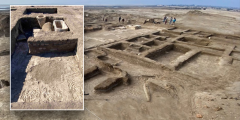
May 19th, 2025 - Ancient military fortifications dating back to the Ptolemaic and Roman eras of Egyptian history were recently uncovered by archaeologists. The Egyptian Ministry of Tourism and Antiquities announced the discovery in a Facebook post, which was translated from Arabic to English, on May 3. Officials said that a recent excavation at the Tell Abu Sefeh site led to the uncovering of an expansive military complex. The Tell Abu Sefeh site is located in North Sinai, near the Egyptian city of ... [Read More]
Source: foxnews.com
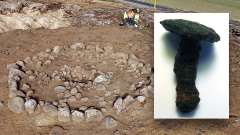
May 17th, 2025 - Swedish archaeologists recently found an "unusual" Viking-era coffin dating back over 1,100 years. The discovery was announced by Arkeologerna, an archaeological organization affiliated with the Swedish government, in April. The grave was found on the outskirts of Linköping, a city in southern Sweden, in fall 2022, though the find was unknown until last month. In a Facebook post, Arkeologerna said its archaeologists were investigating a stone quarry in the area when they came across the ... [Read More]
Source: aol.com
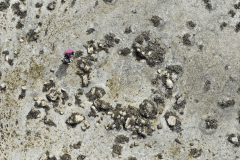
May 12th, 2025 - Scientists think Ice Age humans crossed to this Scottish island and stayed. The Isle of Skye is the largest and northernmost of the major islands in the Inner Hebrides of Scotland. And here, archaeologists have found signs of a journey that defies expectation. Thousands of years ago, long before the invention of farming or even before Stonehenge rose from the Salisbury plain, a band of hunter-gatherers arrived at what was then the edge of the known world. According to scientists writing in a ... [Read More]
Source: zmescience.com

May 12th, 2025 - An ancient Bronze Age settlement was recently uncovered by archaeologists in the United Kingdom while a highway was being built. The Suffolk City Council described the site as a "Late Bronze Age settlement and cremation cemetery" that dates back 3,000 years; they shared the information in a press release dated mid-April. In Britain, the Bronze Age lasted from 2500 B.C. to roughly 800 B.C. The excavation took place on the construction site of Europa Way. The highway was built to link roads in ... [Read More]
Source: foxnews.com

Apr 11th, 2025 - SO'OUD ATEN, Egypt — It's a familiar story: The whim of a leader upends citizens' lives and leads them into the wilderness. In ancient Egypt , Pharaoh Akhenaten was no different. Determined that his population should stop from worshipping multiple gods, more than 3,300 years ago he told residents to seal up their homes and workshops in the city of So'oud Aten with mud and clay bricks and move to a new home, a leading Egyptologist, Zawi Hawass, told NBC News last month. ... [Read More]
Source: nbcnews.com

Apr 4th, 2025 - Proof of an ancient garden, consistent with biblical scripture, has emerged at the holiest site in Christianity — and an archaeologist says "many surprises" from the site are in the works. Archaeologists excavating the Church of the Holy Sepulchre, the ancient church in Jerusalem situated where Jesus Christ was crucified and buried, recently found evidence of ancient olive trees and grapevines. The specimens date back roughly 2,000 years. The discovery echoes the New Testament verse John ... [Read More]
Source: foxnews.com